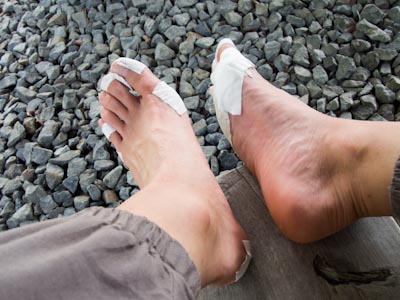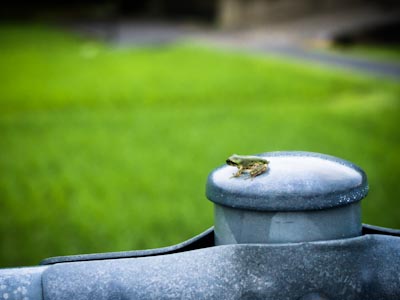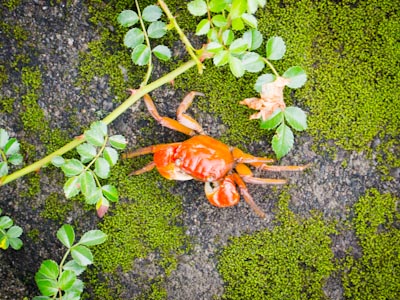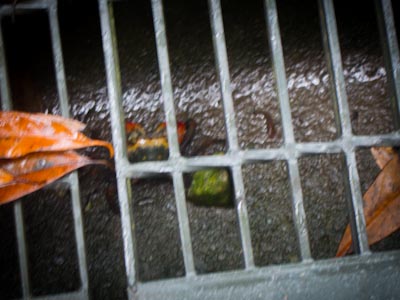Health and Safety on the Shikoku Pilgrimage
Emergencies
Japan’s national emergency phone numbers are:
- Police: 110
- Ambulance, Fire: 119
- Non-emergency medical information: 1339
In Japan, some pay phones have a special button that can automatically connect to a nearby emergency call center. This can be a literal life-saver if you find yourself in an emergency but without cell phone reception.
When using these phones, the caller’s location is traced manually or automatically once the call is connected, but it may take longer to connect you to an operator who can speak your language. Outside Tokyo, it is difficult to receive foreign language assistance when dialing for help.
Drinking Water
In Japan, drinking tap water is usually fine, but whether or not it’s completely safe depends on the person. Tap water in Japan can vary greatly in mineral content, which can cause an upset stomach for those who aren’t used to it.

I drank Shikoku’s tap water occasionally, but vending machines were so ubiquitous and affordable that it was never really necessary. Just be sure to recycle your bottles!
Pilgrims can also drink mountain water in certain situations. While wandering through Shikoku’s mountains, you’re sure to come across small waterfalls with crisp flows. The first thing you should look for is whether there are any factories or residential construction nearby. If so, water may contain runoff and is probably best avoided.
If you are near the foot of the mountain, the water may not be as clean. When you scoop some up, pay attention to whether there is visible sediment. If so, don’t drink it.
Occasionally, you will see a pipe connecting to a water source from higher ground. These are installed by the local residents or farms, often for passerbys!

At one rest stop built and maintained by a group of elderly women, a long hose delivered water all the way from 500 meters up in the mountains (see photo above). This was their osettai. It had a subtle sweet taste.
Blisters
For pilgrims who walk, blisters are an inevitable part of the trail. Don’t wait for them to form before Googling what to do; instead, take proactive steps to prevent them.
What Causes Blisters?
Blisters are caused by friction against your skin. When you walk, the rubbing motion between your toes, feet, socks, and shoes produces heat and pressure on your skin, creating liquid-filled pockets. Excessive moisture from your sweat or the humidity clogs the pores on your skin, adding to the risk and severity of blisters.
Prevention: Reduce Friction and Keep Dry
Approaches in dealing with blisters should aim to
- reduce friction,
- keep your feet dry, and
- lessen physical pressure on your skin.
First, make sure you choose the right shoes. Your shoes should not be too loose or too tight on your feet. If your shoes are too tight, your toes rub against each other and the sides of the shoes. You also risk complications related to reduced blood circulation caused by cramped toes. If your shoes are too large, the motion of your feet sliding back and forth against the sole adds to the risk of forming blisters as well. Studies have shown that coushioned insoles can greatly reduce the risk of getting blisters. Don’t forget that with the great distances you have to walk each day, your feet will naturally swell to a larger size, so keep this in mind when shoe shopping for the pilgrimage or any other trekking activities.
In addition to wearing trekking shoes, we encourage you to bring a pair of sandals, and extra socks. With blisters and especially on humid days, you may feel better switching to a pair of sandals periodically to air out your feet. If your feet get wet, change your socks.
Choosing the right socks for your pilgrimage matters a lot. There are socks that are extra absorptive or have friction pads on their underside, but many have found traditional five-toe Japanese socks (五本指靴下) to work especially well. With these socks, the extra fabric will prevent your sweaty toes from rubbing against each other all day. Avoid wearing socks made of material that tend to trap moisture, such as merino wool.
One way to reduce friction is to lubricate your feet. Products such as petroleum jelly (Vaseline), A&D ointment, and other sports lubricants are all great options. To keep your feet dry, you can also apply corn starch or baby powder periodically. However, while walking on the pilgrimage, you might not have frequent opportunities to stop and relubricate your feet. Another prevention technique is to identify areas between your toes and other areas of your feet that may be prone to friction, and cover these problematic spots with tape. Medical tape, moleskin, gel bandages, paper tape, and even duct tape are all effective.

During the pilgrimage, a fellow pilgrim taught me a way to wrap medical tape around my toes and the front-bottom of my foot, which has a similar effect to the five-toe sock.
The second I started feeling an impending blister, I went wild taping over it (see photo). It didn’t matter whether it was imagined or real. After a week of constant blister pain, my skin calloused and I never got another.

Treating Blisters
So, you’ve taken steps to prevent them, but after a long day of walking and sweating, you sit down and feel that little sting in between your toes. A blister has formed – now what?
A blister must be treated right away. Don’t wait until the end of the day to get to it. The earlier you treat it, the quicker the recovery process. If you feel a blister forming, you may still be able to prevent it by taping it tightly.
If a blister has already taken its form, look at its condition. A blister can be intact, torn, or deroofed. If it is intact, take a needle and gently pierce through the top-most layer of the skin. It won’t hurt unless you poke too deep into the flesh beneath the blister. Let the liquid drain.

If popping blisters sounds crazy to you, you’re not alone. But an untreated blister hurts a lot more than a little needle prick. After your first day of walking on a blister, you’ll want to do everything you can to prevent them.
Now that the blister’s skin is broken, you should apply an antiseptic like Betadine. And even though it is torn, you should try to keep your calluses (the dead skin that covers the blisters) in place. These toughened patches of skin are your body’s natural way of guarding itself against further damage to the skin. Next, dress your blister with tape (foam tape or medical tape for the skin) or a hydrocolloid dressing like Compeed. Wrap the affected area tight enough to keep the air out, but not so tight that it would further irritate it and cause you pain.
At night, after a shower or bath, sleep without anything on the affected area (or with just a light bandaid) to “air it out.” When you wake up the next day, repeat the process of applying the tape, and do this everyday until the blister completely disappears. If not treated thoroughly, blisters can return easily.
If a blister does not heal or appears to become infected, seek professional medical care immediately.
Wildlife
Shikoku’s three most dangerous wild animals are boars (called “inoshishi”), a venomous snake called “mamushi,” and giant hornets “suzumebachi” (sometimes called “murder hornets” in the West). While all three are fairly uncommon to encounter on the road, it is wise to learn ahead of time about what to do if you are confronted, bitten, or stung.
Wild Boars
The wild boar (inoshishi) is a Japanese subspecies of the wild boar. Male inoshishi live solitarily, and females live in groups. If agitated, they can run up to 40 kilometers per hour. They are a big nuisance for farmers in Japan, as they will eat crops and damage enbankments by digging. On rare occasions, they attack people.
Most pilgrims never see a wild boar, but those who do typically encounter them while on mountain or forest paths. Inoshishi can pick up your scent long before you see them. While they usually hide, boars can be unpredictable – especially if they’re acting to protect their offspring.
Sometimes, wild boars are simply curious and will walk up to you to get a closer look. Other times, they are scavenging for food when they approach you. If a boar is obviously there for food, stand tall and shout at it, confidently but not aggressively. Do not feed wild boars, ever.
Boars typically only act aggressively when they are fearful or provoked. Most of the time, they’re just fearful. Mother inoshishi will let out a loud grunt and snort if spooked before running away at high speeds.
In the rare cases where humans are attacked by boars, it is almost always because people first acted aggressively or provoked them with dogs. If a female boar with her piglets starts to growl at you, confidently back away.
Japanese Pit Vipers
Japanese pit vipers (mamushi) are the most venomous snakes in Shikoku. Each year, 2,000-3,000 people in Japan get bitten by a mamushi, and about 10 die from it.
The average length of a mamushi is 45-81 centimeters (18-32in). The color of their bodies is pale gray, reddish-brown, or yellow-brown, overlaid with a series of irregularly-shaped blotches bordered in black. A mamushi’s colors make for brilliant camouflage when they’re hiding in vegetation or a pile of leaves.
Mamushi tend to be more active during warmer months. Locals put up warning signs where mamushi are often spotted – look for “まむし” or “マムシ”.
You may find them on mountain trails with a lot of foliage or fallen leaves. When hiking in these areas, you should be aware of your surroundings. Many pilgrims pound their walking staff (“kongōzue”, 金剛杖) on the ground and rocks ahead to scare away mamushi as they walk. The mamushi and other poisonous insects are a big reason to wear long pants while completing the pilgrimage’s more remote hikes.
A mamushi’s bite is often fatal if left untreated. Bitten victims require about a week of intensive antivenom care in a hospital. It goes without saying: if you are bitten by a snake of any kind, seek medical help immediately.
The yamakagashi is another venomous snake in Shikoku. It is easier to spot because of the yellow coloring on its head and red stripes.
Japanese Giant Hornets
The Japanese giant hornet, or “suzumebachi” (スズメバチ、雀蜂、胡蜂), literally meaning “sparrow bee,” is a subspecies of the world’s largest hornet. Due to both their aggressiveness and prevalence, most agree that suzumebachi are the most dangerous animal in Shikoku. In Canada and America, they’re now an invasive species known as “murder hornets.”
As the name suggests, suzumebachi are astonishingly large… adults often grow to 4.5 centimeters (1.8in), with a wing span of 6 centimeters (2.4in). They have large, bright yellow heads with big beady eyes and a dark brown thorax with an abdomen banded in brown and yellow.
Suzumebachi tend to live in rural areas in Japan, and – unlike boars or mamushi – can be spotted fairly often on the Shikoku Pilgrimage trail. They are most active during the summer, and will hang around until September and October, after which cold weather causes colonies to die out.
When provoked, suzumebachi can be very aggressive. Every year, about thirty to forty people in Japan die from suzumebachi stings. Their venom, injected by a 6.25-millimeter (0.25in) stinger, attacks the victim’s nervous system and damages tissue.
Being stung by a suzumebachi is extremely painful and requires immediate hospitalization. Their sting can cause anaphylactic shock in allergic individuals, but can still be lethal even to people who are not allergic if enough venom is injected, especially if stung more than once.
Suzumebachi are attracted to darker colors and the smells of perfume, so avoid wearing either when possible. They make a loud buzzing sound – stay alert when walking in the mountains. If you encounter one of these bees, try to stay calm and slowly move away from them. If you get stung, immediately wash the wound with clean water, then try to squeeze out as much of the venom as possible. If you have an antihistamine cream, apply it on the wound. Call for emergency help, and alert locals or businesses nearby - they may have antidotes handy.
Centipedes
There are many kinds of centipedes in Japan. A native Shikoku species that is particularly dangerous is the “mukade” (ムカデ、百足), which can grow up to a shocking 20 centimeters (almost 8in).
Mukade are most commonly found during and after the rainy season, from June to August, in the mountainous countryside. Because they lack a protective coating found on most insects, mukade can easily dry out. Therefore, they tend to hang out in moist environments like the underside of logs or rocks, and usually emerge at night. You might also find them in a house or even on a bed.
Mukade are incredibly territorial – just throwing them outside won’t get rid of them. They will find their way back to defend “their” space. To kill them, Shikoku locals tend to pour boiling water on them before cutting them in half.
Mukade are venomous and attack humans if agitated. People describe the pain of a mukade bite as 10 times stronger than a common bee sting. A victim’s skin will swell and burn, but there is usually no need to go to the hospital (except in the case of an allergic reaction).
If you get bitten by a mukade but it is not severe, one option is to go to a drug store and purchase a product called “muhiarufa EX” (ムヒアルファEX). This cream will cool the skin and relieve pain. Some Japanese also swear by the folk remedy of soaking the bodies of mukade in sesame oil or shochu and curing it for use as an ointment.
Other Insects
The Shikoku pilgrimage will take you through some of Japanese most remote and idyllic countryside. Along the way, you will inevitably run into several other pesky creatures:
Cicadas (“semi”, セミ) are mostly harmless – but if they mistake you for a tree, they may grip you with their legs.
The Japanese stink bug (“kusagikamemushi”, クサギカメムシ) are harmless when unprovoked, but if you touch or intimidate them, they can spray you with a mist that smells of rotten cilantro.
The denkimushi is a small caterpillar that secretes a chemical which feels like an electric shock if you touch them.
The Japanese mountain leech (“yamabiru”, ヤマビル, 山蛭) is a blood sucking creature that will extend their bodies and jump on you if you get too close. They can be found almost anywhere – in bodies of water, and on trees or land. Yamabiru can bite through your socks and clothing. You won’t feel the bite as they release a numbing agent beforehand.
Don’t let the diverse wildlife of Shikoku scare you away. The countryside and wilderness is gorgeous; you will feel like a creature yourself in the mountains. Some pilgrims never see any of the aforementioned animals, and some encounter them regularly.

When I did my pilgrimage from late-May to mid-July, I didn’t see anything except for a dead centipede (mukade). I did, however, see dozens of harmless and adorable little animals! Pictured below is a tiny Japanese tree frog (amagaeru in Japanese – they are a sign that the rice fields are healthy), a crab, and another crab that is rainbow-colored (sorry, I don’t have a good picture... they were all incredibly shy).








